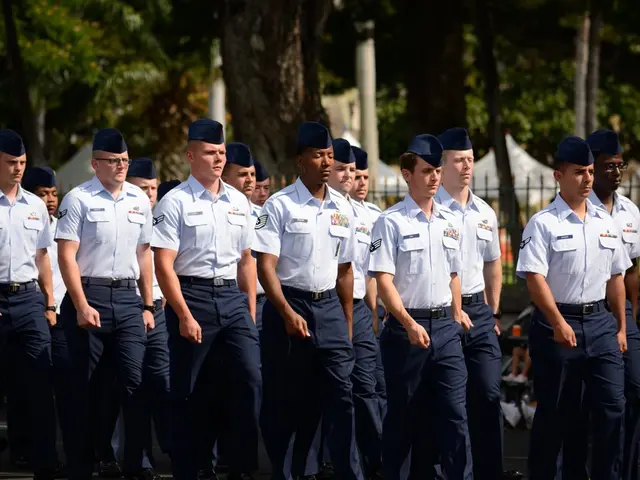Stranded for Two Days in Arizona Desert: Two Hikers Successfully Rescued in Independent Rescue Operations
In the past week, rescue teams in Arizona's deserts have been frequently called upon to assist hikers in distress. Two separate incidents occurred over the weekend, involving hikers injured on desert trails in southern Arizona.
On Saturday, April 12, a hiker sustained a possible broken ankle near the Superstition Mountains, east of Phoenix. The incident prompted a response from Tucson Sector Border Patrol's Search, Trauma, and Rescue (BORSTAR) team. With assistance from the Pinal County Sheriff's Office helicopter, the team located the injured hiker. A BORSTAR agent was lowered to the ground to evaluate the hiker before they were hoisted to a safe landing zone.
The following day, a man was found injured on the Arizona Trail near Pauline Ridge. This time, the Sonoita Border Patrol Station dispatched agents to respond to a callout from the Santa Cruz County Sheriff's Office. Although they had access to a Customs and Border Protection helicopter, the rugged, mountainous terrain necessitated a ground rescue. However, the helicopter was crucial in locating the injured hiker, who had been lost for two days. After receiving medical attention at the scene, he was transported to the Sonoita-Elgin Fire Department for further treatment.
In praise of the rescuers, Tucson Sector Chief Patrol Agent Sean L. McGoffin expresses his admiration, as reported by ABC News: 'I am incredibly proud of our agents' swift and professional response to these incidents. These rescues are a testament to their training, teamwork and unwavering commitment to public safety. Our agents and teams continuously demonstrate their dedication to saving people's lives.'
These incidents come just days after a large group of hikers, including 25 children with special needs, were rescued from Arizona's trails under scorching temperatures. In an earlier incident, a hiker tragically died after being caught in the extreme heat, prompting the closure of the Arizona Hot Springs and Goldstrike trails until April 13. Hiking in Arizona's deserts during the summer months can be extremely hazardous, particularly due to excessive heat.
To ensure safety when hiking in hot weather, it is recommended to drink plenty of water, apply sun protection, seek shaded trails, wear lightweight and loose-fitting clothing, and save strenuous activities for early morning or evening.
In preparation for a hike, hikers should begin hydrating the night before and inform someone about their itinerary. It's also advisable to wear sturdy, broken-in hiking boots, bring a wide-brimmed hat, sunglasses, and sunscreen with SPF 15 or higher, and carry more water than necessary. Additionally, it's crucial to start early, take regular breaks, be aware of signs of heat illness, and have a fully charged cell phone in case of emergencies. It's safer to avoid hiking during the hottest part of the day or consider night hiking if possible. By following these tips, hikers can significantly minimize the risks associated with hiking in Arizona's deserts during summer months.
- To promote health and wellness among hikers, incorporating fitness-and-exercise routines before embarking on desert trails could prove beneficial, especially during summer months.
- In light of the recent incidents, workplace-wellness programs could include educational sessions on sports-bettering and therapies-and-treatments to help hikers make informed decisions when engaging in outdoor activities.
- As part of a comprehensive health-and-wellness approach, scientists can research innovative methods for designating sports trails with shaded areas or installing equipment for providing cool water, enhancing safety for hikers in Arizona's deserts during the hotter months.








